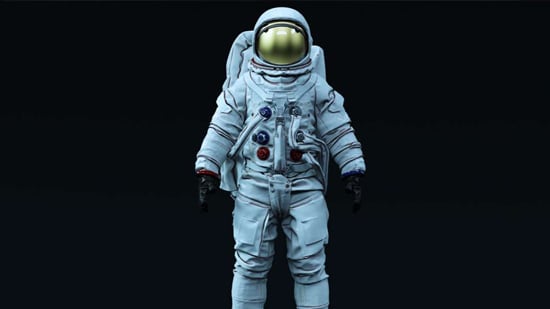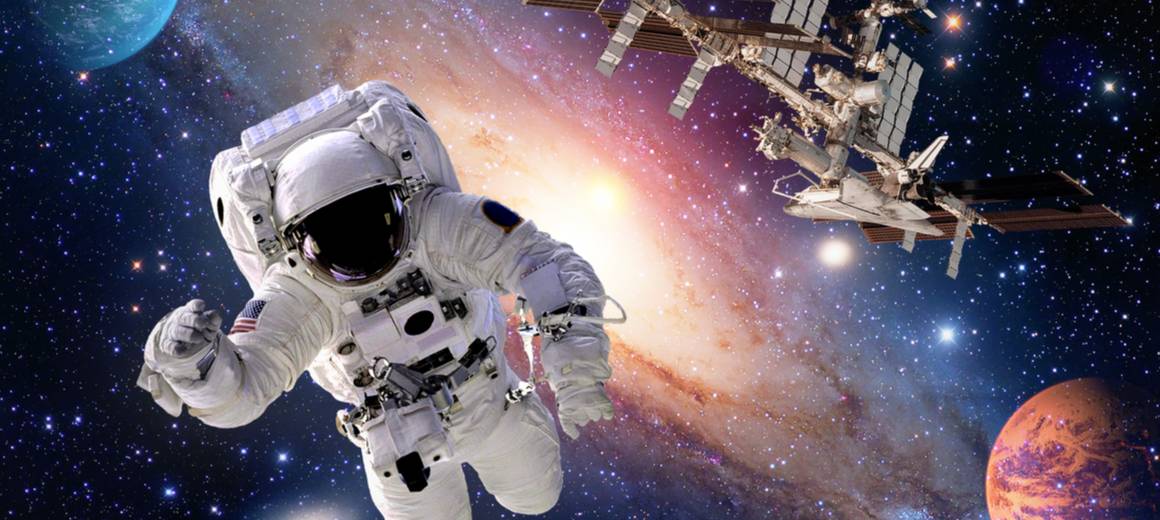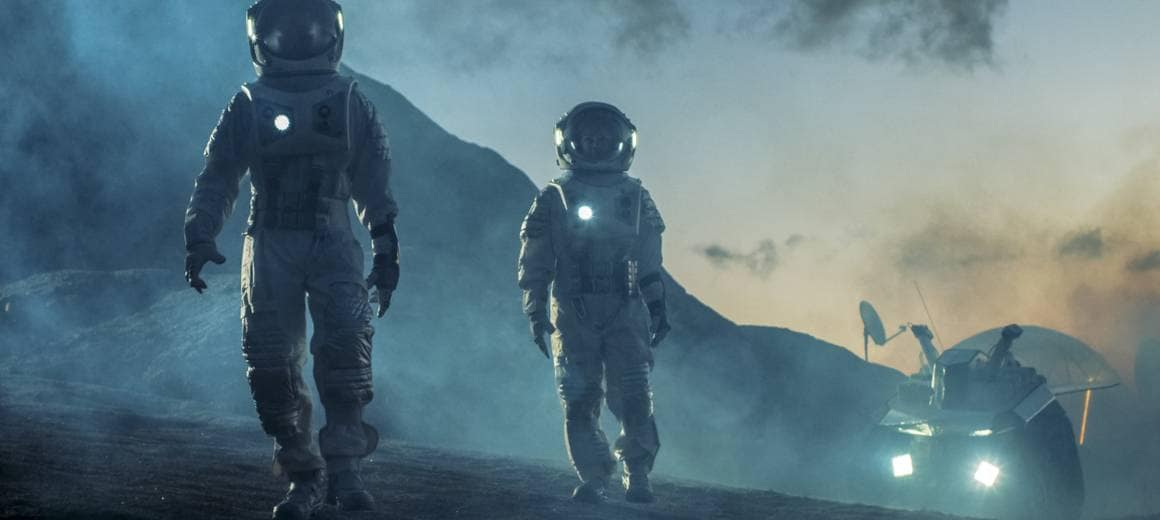Have Spacesuit, Will Travel
2021 marked the 60th anniversary of Alan Shepard’s historic spaceflight, which saw him become the first American in space, just a few weeks after the Soviet Union’s Yuri Gagarin beat him to become the first human to leave Earth’s atmosphere. These two heroes of the space race had much in common, but one of the most important things was what they were both wearing – spacesuits.
Cabin pressurisation inside a private jet allows you to enjoy your private jet charter flight in comfort. Without this, you would experience difficulty breathing because air is less dense at high altitudes, and therefore carries less oxygen (ground-level air pressure is just over 14 pounds per square inch (PSI), but at a typical cruising altitude of around 30,000ft, it drops to just 4 PSI).
Astronauts must not only deal with drastic drops in air pressure, but with no atmosphere, they need meticulously engineered suits to protect them from the unforgiving vacuum of space. The suits must provide oxygen, filter carbon dioxide and supply an air density that the body needs to breathe. On top of this, extreme temperatures - that range from punishing cold in the shade to searing heat in sunlight - jostle with harsh radiation as the most potent dangers of being in space.
Designing a spacesuit to withstand this environment means it must essentially act as a miniature one-person spacecraft.
So, let’s take a look at some of the milestones of spacesuit development that have, over the decades, made our initial forays into space possible.
First extravehicular activity suit
In the early 1950s, the Litton Mark I was developed by Dr Siegfried Hansen while working for Litton Industries, a large defence contractor in the US. The spacesuit was probably inspired by the early pressure suits of the 1930s, similar to one commissioned in 1934 by aviator Wiley Post for a solo flight around the world. With aircraft still in their infancy compared to today’s commercial and private planes, the airtight bodysuit – complete with helmet and an air-supply hose attached to a cylinder of compressed air and a pump – allowed Post to reach an altitude of 40,000ft.
Hansen’s Mark I was designed to be worn in a vacuum and later served as the basis for spacesuits that would allow humans to travel into space.
Mercury rising
On 5 May 1961, Alan Shepard made his trailblazing spaceflight aboard NASA’s Freedom 7 in the instantly recognisable silver Mercury spacesuit. Based on high-altitude flight suits worn by US Navy pilots, his suit was designed to protect against a sudden pressure loss during his 15-minute suborbital flight. It performed well, as did others like it, and was used by his fellow Mercury astronauts who followed on later missions.
The Mercury spacesuit was not built to last. Today, it is part of a major conservation project in the US at the Smithsonian Institution’s National Air and Space Museum in Washington, D.C. The use of synthetic materials in its construction is particularly problematic, as Dr Cathleen Lewis, curator of International Space Programs and Spacesuits at the museum, tells Air Charter Service’s Cloud Magazine: “They break apart, they become brittle and they degrade. And, when you have a combination of synthetic materials, they interact badly. We’re trying to find the best ways to stabilise those materials and even reverse the ageing process.”
While the rubber seal around the neck of the suit has fared particularly badly over the decades, its distinctive silver sheen is also a challenge. The International Space Programs and Spacesuits team is currently trying to pinpoint the origins of this coating and why it’s fading, in an effort to preserve the historic garment for future generations.
The Smithsonian’s Digitization Program Office is also scanning the suit and capturing ultra-high-resolution imagery that will create a digital record and spark more ideas on how to preserve it.
One small step
The Mercury missions were followed by the Gemini missions, which were the first to see American astronauts making the giant step outside the capsule for NASA’s first spacewalk in 1965. Soviet cosmonaut Alexy Leonov had worn the Berkut, modified from a Sokol SK-1 suit during the first spacewalk. The suit provided oxygen for just 45 minutes of activity and was only used on the Soviet-crewed Voskhod 2 space mission, mainly due to its poor mobility.
These practical experiments, conducted in Earth’s orbit, provided crucial experience that informed the later Apollo programme and the moon landings.
In turn, NASA learnt from the Apollo spacesuits too. The administration came to appreciate the importance of dealing with moon dust – jagged, electrostatically charged particles that stick to everything, scratch lenses and clog mechanisms. Most of all, they learnt about the realities of living and working in spacesuits.
“One great concern is the prevalence of overuse injuries among astronauts”, explains Dr Lewis of the Smithsonian’s National Air and Space Museum. “Astronauts have a very high rate of shoulder and elbow injuries, so they’re looking at ways to design spacesuits with less pressure on the joints.
“There’s a balance between protection and mobility. You could make a spacesuit that perfectly protects an astronaut from the elements of solar radiation, the lack of atmosphere, extreme temperatures and moon-dust particles, but it’s no good if the astronauts are not able to move and explore.”
Future perfect
All of this experience will be crucial when humanity returns to the moon. In 2019, NASA unveiled its next-generation spacesuit – the Exploration Extravehicular Mobility Unit (xEMU) – which will be used for the Artemis missions. These missions will see humanity return to the moon by 2024 at the earliest, with the first woman and the first person of colour taking historic steps on the lunar surface.
The xEMU has been designed so that it can easily be reconfigured for different uses, whether that’s a spacewalk around the International Space Station or even a walk on the surface of another world. New joint bearings will allow for more hip rotation and bending at the knee, while a system for removing carbon dioxide will replace the lithium hydroxide scrubbers that were first used in the 1960s, and the famous ‘Snoopy cap’ headsets will also be replaced by an updated communications system.
Most of all, the xEMUs – and the brave people wearing them – will combine decades of hard-won experience at tackling one of the most daunting challenges humanity has ever faced. Whatever comes next, the evolution of the spacesuit over the past six decades and into the future is what will help us to continue our explorations of the moon, Mars and the farther reaches of our solar system.
To infinity and beyond
NASA’s Innovative Advanced Concepts Program is busy creating a spacesuit that will be used by astronauts who travel to planets such as Mars. The Texas A&M Engineering EVA (extravehicular activity) concept spacesuit will have stretchable, self-healing skin, and will be capable of providing visual feedback to the wearer of possible damage, threats or issues with the suit. This next-generation, intelligent and mobile spacesuit is intended for exploration missions that will take astronauts out of the spacecraft and into new worlds.
Stay in Earth’s orbit for your next plane rental or charter with ACS
At Air Charter Service (ACS), we work hard to give you the best charter flight experience, no matter where (on Earth) you’re headed. To find out more about the comfort and flexibility of private plane charter, or for private plane rental rates, contact us for a personalised quotation or call one of our experienced aviation consultants now on +44 (0)20 8339 8588.

 Commercial and private plane technology never stands still. Evolving alongside aircraft have been the suits astronauts wear to survive in space. Join us as we take a fascinating look at how the spacesuit has evolved, along with our ambitions for space travel.
Commercial and private plane technology never stands still. Evolving alongside aircraft have been the suits astronauts wear to survive in space. Join us as we take a fascinating look at how the spacesuit has evolved, along with our ambitions for space travel.



